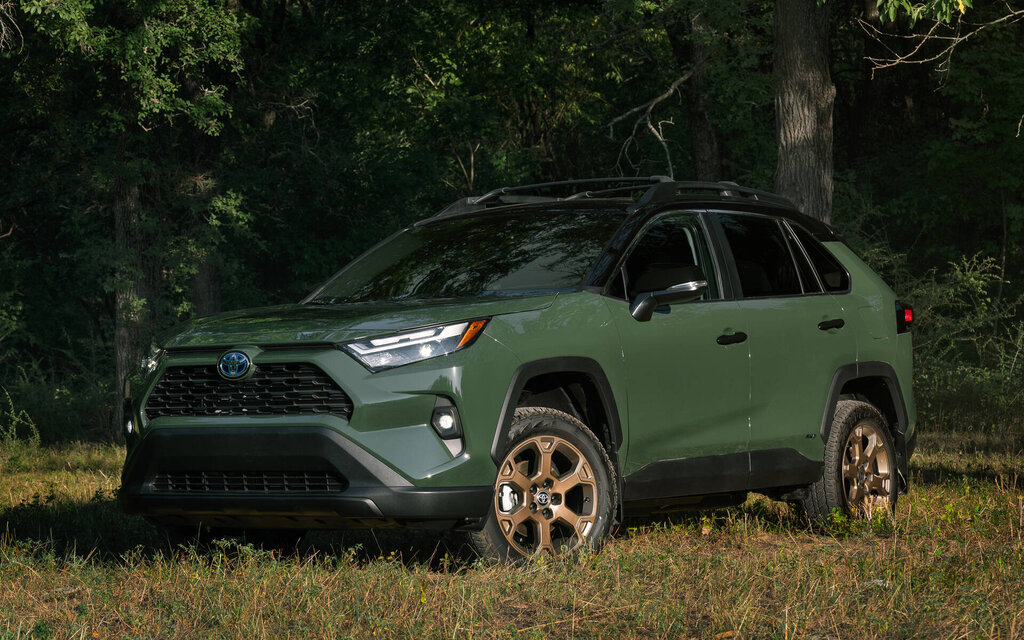When it comes to everyday practicality, the importance of a car’s interior versatility cannot be overstated. While horsepower figures, luxury trims, and infotainment systems often dominate the spotlight, the way a car’s seats fold—or fail to—can be the make-or-break factor for families, road-trippers, adventurers, and anyone who needs to maximize utility.
After all, if a car’s rear seats don’t fold completely flat, no amount of clever engineering or cargo space statistics can make up for the frustration of trying to slide in a piece of furniture, a stack of moving boxes, or a bike. On the other hand, when those seats do fold flat, it unlocks an entirely new level of functionality, turning a basic commuter car into a weekend warrior’s dream.
Manufacturers have long understood the appeal of fold-flat rear seats, especially in crossovers, SUVs, and hatchbacks. A truly flat load floor allows for easier loading, greater space efficiency, and more flexible configurations for passengers and gear. Yet not all vehicles rise to the occasion.
Some offer only partial folding angles that leave awkward inclines or steps in the floor, while others retain thick seat bolsters or fixed headrests that block proper folding. In some cars, the seats technically fold, but the process is so complicated or the results so uneven that the benefit is nearly canceled out. In these cases, owners often find themselves wasting valuable vertical space or dealing with unstable, unlevel cargo surfaces.
This list takes a hard look at five cars that get it right, with rear seats that fold down completely flat—often with a single motion—and seamlessly transform passenger space into a functional cargo area. Whether it’s a compact SUV with modular seating or a full-size crossover with smart engineering, these cars deliver on the promise of versatility. Their fold-flat seats are thoughtfully designed, easy to use, and engineered to maximize every cubic inch of space.
But not every car earns a gold star. In the second half of this article, we’ll examine five vehicles that disappoint when it comes to seat-folding practicality. These are cars that may look great in the showroom or drive well on the road, but once you try to load them up for a weekend getaway or a trip to the hardware store, they reveal their shortcomings.
Whether due to overly thick seat cushions, lazy design choices, or non-removable headrests, these vehicles waste cargo space in ways that frustrate and limit their utility.
So if you’re someone who values real-world practicality as much as performance or luxury, read on. This guide will not only highlight the best and worst when it comes to fold-flat seating—it will also give you a better understanding of what to look for when shopping for a truly versatile car.
Because when it comes to hauling gear, camping out in your vehicle, or just making the most of your space, a truly flat load floor can be the unsung hero of your next great road trip—or the thing that ruins it.
Also Read: 5 Cars With Tilt/Telescopic Wheels That Fit All Sizes And 5 That Don’t
Table of Contents
Toggle5 Car Seats That Fold Completely Flat
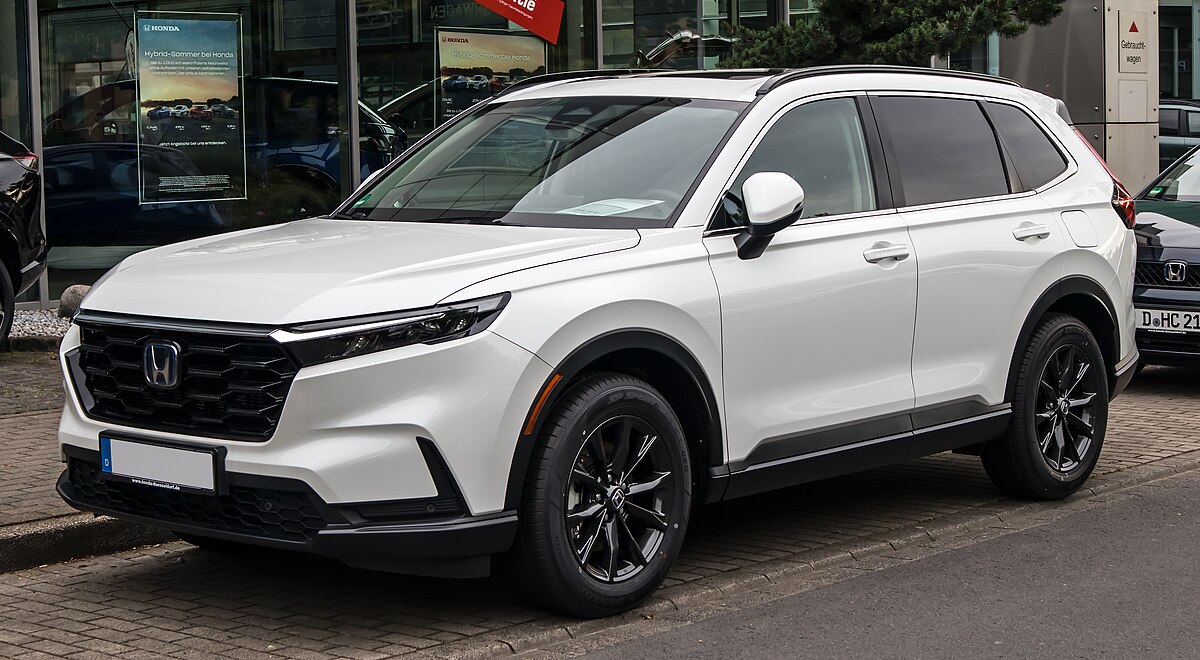
1. Honda CR-V
The Honda CR-V has long been considered a benchmark in the compact SUV segment, and one of its most praised features is the ingenious rear seat folding system. Honda’s “Magic Seat” mechanism (inspired by the Fit) isn’t just a gimmick—it’s a practical solution that redefines how cargo space should work.
With a single lever pull located near the rear doors or trunk area, the CR-V’s rear seats drop forward and down into a recessed cavity in the floor, creating a broad, completely flat cargo surface. It doesn’t require removing headrests or engaging in a multi-step folding dance—it just works. This is particularly helpful when your hands are full or you’re loading oddly shaped items on the fly.
What makes this setup even more impressive is how flush the cargo floor ends up. There are no awkward humps or misaligned seatbacks that interrupt the load space. The floor is low, wide, and accessible, which makes it ideal not just for hauling groceries or luggage, but for transporting larger, heavier items like flat-pack furniture, outdoor gear, or bicycles.
Campers and pet owners also appreciate the flat surface, which doubles as a sleeping area or secure space for kennels and crates. Honda has thought about the details—from the seat hinge design to the angle of recline when folded—to ensure that the transition from passenger to cargo space is seamless and user-friendly.
The result is a crossover that feels bigger than it is. You’d expect this kind of smart packaging in a full-size SUV, not a relatively compact one like the CR-V. And yet, that’s the genius of the design: it gives you all the flexibility of a much larger vehicle without the bulk or fuel penalty.
Whether you’re a city dweller squeezing furniture into tight apartments or a weekend adventurer heading out of town with your gear, the CR-V’s fold-flat seats make the most of every inch—and make you question why all automakers don’t offer something similar.
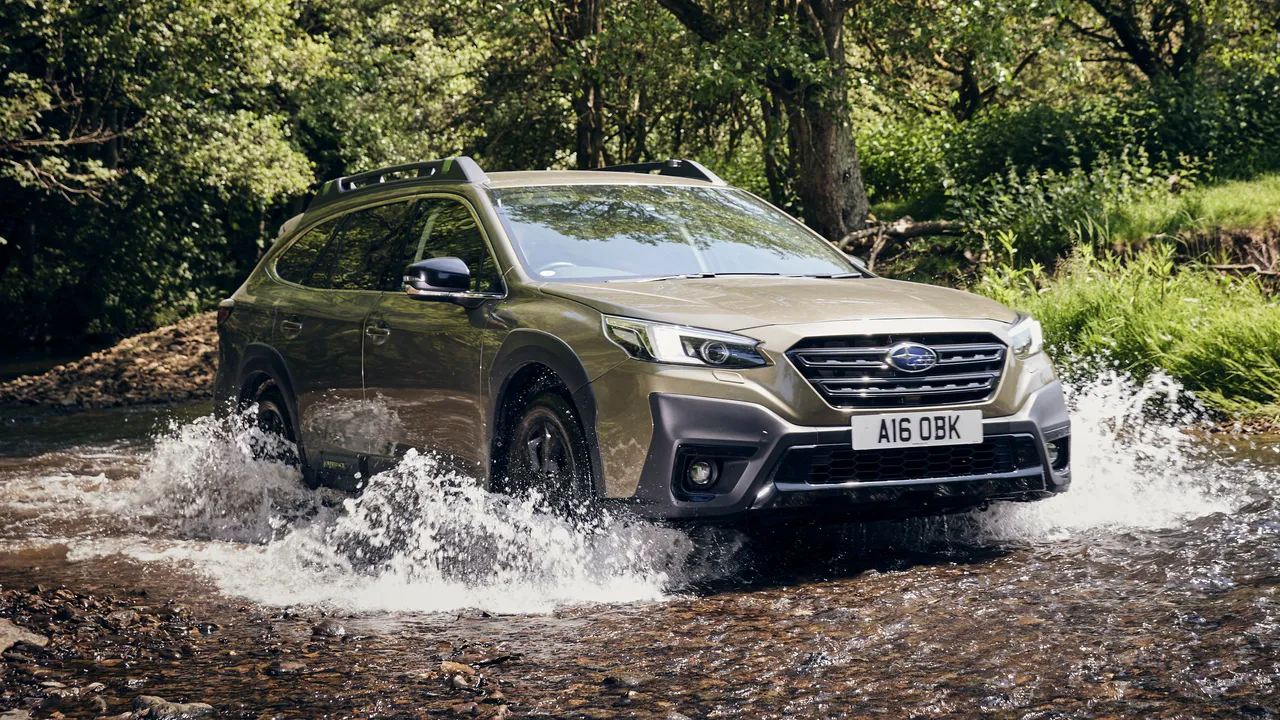
2. Subaru Outback
The Subaru Outback is an outdoorsy favorite, and much of its reputation for versatility is earned by its smart, fold-flat rear seating design. In a matter of seconds, the 60/40 split rear seats fold down completely level with the cargo floor, transforming the wagon-like SUV into a gear-hauling machine.
Subaru’s engineers were mindful of cargo flexibility, designing the Outback’s rear seats to tuck away without any protrusions, raised edges, or oddly angled inclines. Whether you’re carrying camping gear, ski equipment, or a couple of big dogs, the flat floor is both easy to load and expansive in its utility.
One of the Outback’s unsung advantages is how low and wide its cargo area is compared to taller SUVs. The cargo floor height is optimized for accessibility, so there’s less lifting and straining required when loading bulky items. And because the seats fold down nearly flush with the rear lip of the trunk, sliding items in is an easy, uninterrupted motion. There’s no step or gap to navigate.
The result is a space that works just as well for cross-country adventures as it does for everyday errands. Many Outback owners also note how useful the flat floor is for sleeping inside the vehicle—something Subaru has embraced with optional camping accessories and cargo liners.
Additionally, the Outback’s clever under-floor storage and tie-down points only add to its practicality. Combined with its standard all-wheel drive and rugged styling, the flat-folding seats are part of a broader utility-first design philosophy. Subaru understands that its customers don’t just want cargo space on paper—they want usable space, and the Outback delivers.
It’s one of the few vehicles where you truly feel like the interior was designed around real-world use, and the ability to fold the seats completely flat is a huge part of what makes it one of the most beloved do-it-all vehicles on the market.

3. Toyota RAV4
The Toyota RAV4 may not carry the same off-road legacy as some of its competitors, but when it comes to everyday usability, its rear seat design is among the best in the segment. Modern RAV4 models feature a simple and effective folding mechanism that lets the second-row seats collapse flat into the cargo floor with minimal effort.
Whether you’re working with the 60/40 split or folding both sections for maximum space, the outcome is the same: a completely flat surface that runs straight from the trunk to the back of the front seats. Toyota designed the RAV4’s interior for flexibility, and the fold-flat seats are a big part of what makes it so practical for families and travelers alike.
The appeal of the RAV4’s cargo area is amplified by its square, upright design. Unlike more stylized crossovers that sacrifice rear cargo height for sloping rooflines or thick C-pillars, the RAV4 embraces its utility-first shape. This makes the fold-flat seats even more valuable, as they unlock a clean, box-like space that maximizes volume and versatility.
Whether you’re loading up sports gear, a couple of large suitcases, or even a small dresser, the RAV4’s interior swallows it up with ease. The rear seats fold in one motion and stay securely down, creating a sturdy platform that doesn’t shift or bounce while driving.
In a world where automakers often prioritize style over substance, the RAV4’s rear seat execution is refreshingly functional. There’s no complicated folding process or awkward interaction with headrests—just a practical solution to an everyday problem. Toyota clearly understands that its buyers need more than just a big trunk; they need usable space.
The fold-flat design not only improves loading efficiency but also enhances the RAV4’s appeal as a one-car solution for everything from commuting to road tripping. It’s the kind of intelligent, understated engineering that keeps people coming back to the RAV4 generation after generation.
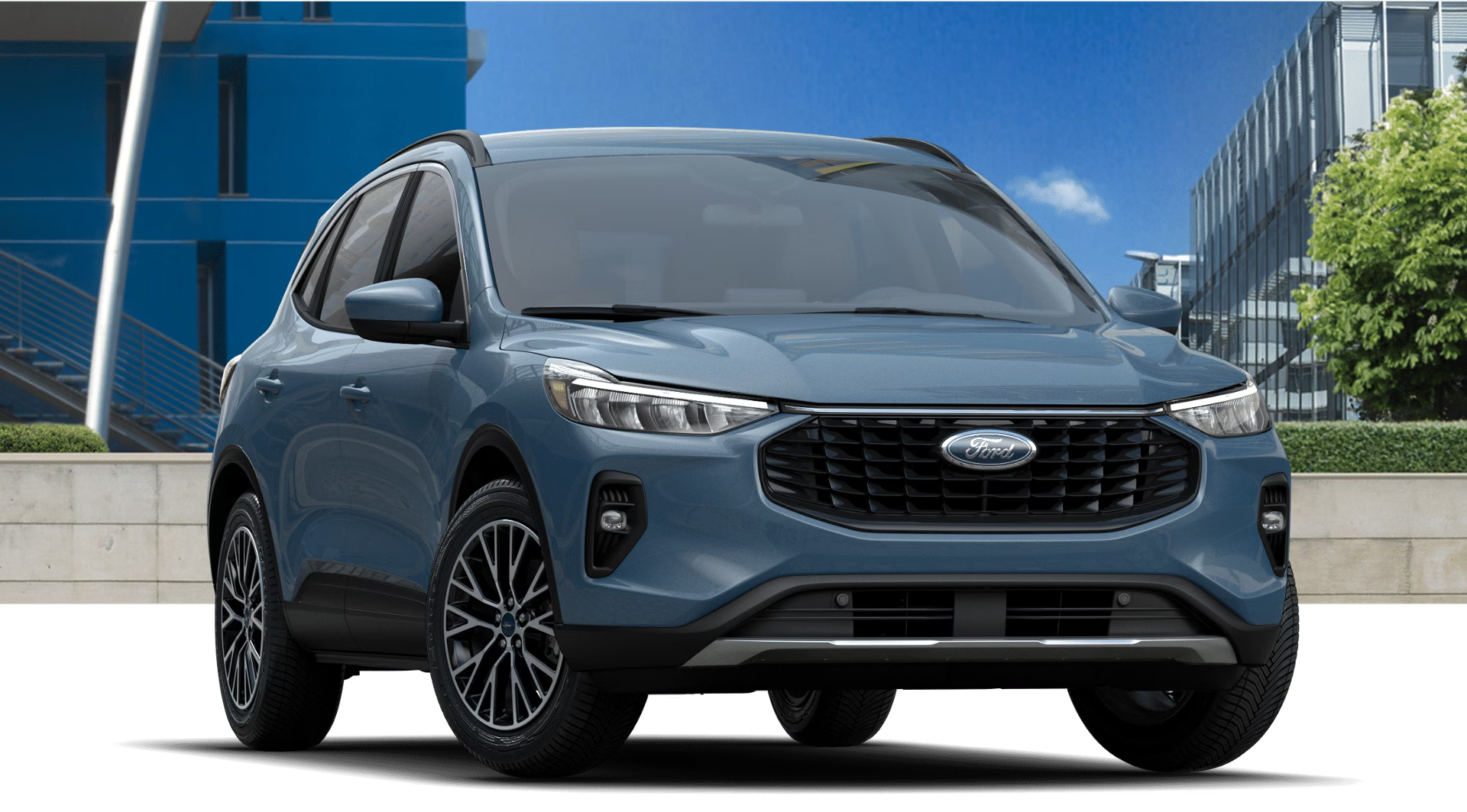
4. Ford Escape
The Ford Escape has quietly become one of the most adaptable crossovers on the market, and much of its everyday usability can be credited to its excellent seat-folding functionality. In recent generations, the Escape has featured second-row seats that fold completely flat into the cargo floor, opening up a long, wide, and level storage area.
It’s not just the flatness that impresses—it’s how easily and intuitively the seats collapse. With a single pull of a lever located on the upper corner of each seatback, the cushions fold forward in one clean, fluid motion, eliminating the need for excessive effort or multiple steps. It’s a design clearly intended to simplify cargo loading without sacrificing comfort for rear passengers when the seats are upright.
The seatbacks in the Escape are thick and supportive when used for passengers, but they also fold down to create a seamless plane that aligns beautifully with the trunk floor. The surface is stable and even, without dips or awkward height differences.
This becomes especially helpful for transporting flat-packed furniture, longer sporting equipment, or a week’s worth of luggage. You can load items straight in without worrying about angled seatbacks or having to compensate for protruding seat hinges. This kind of thoughtful execution makes the Escape feel like a far more versatile machine than its exterior size might suggest.
What’s especially noteworthy is how the Escape manages to balance comfort and function. Many vehicles that offer fold-flat seating do so at the expense of rear seat cushioning or support. But Ford has managed to engineer a rear bench that’s both comfortable for passengers and cooperative when folded down.
It’s a clever compromise that makes the Escape an ideal choice for urban drivers who need a maneuverable vehicle that doesn’t skimp on practicality. Whether you’re a small family, a rideshare driver, or a weekend hobbyist needing to haul gear, the Escape’s flat-folding seats make life easier in ways that often go unnoticed—until you really need them.
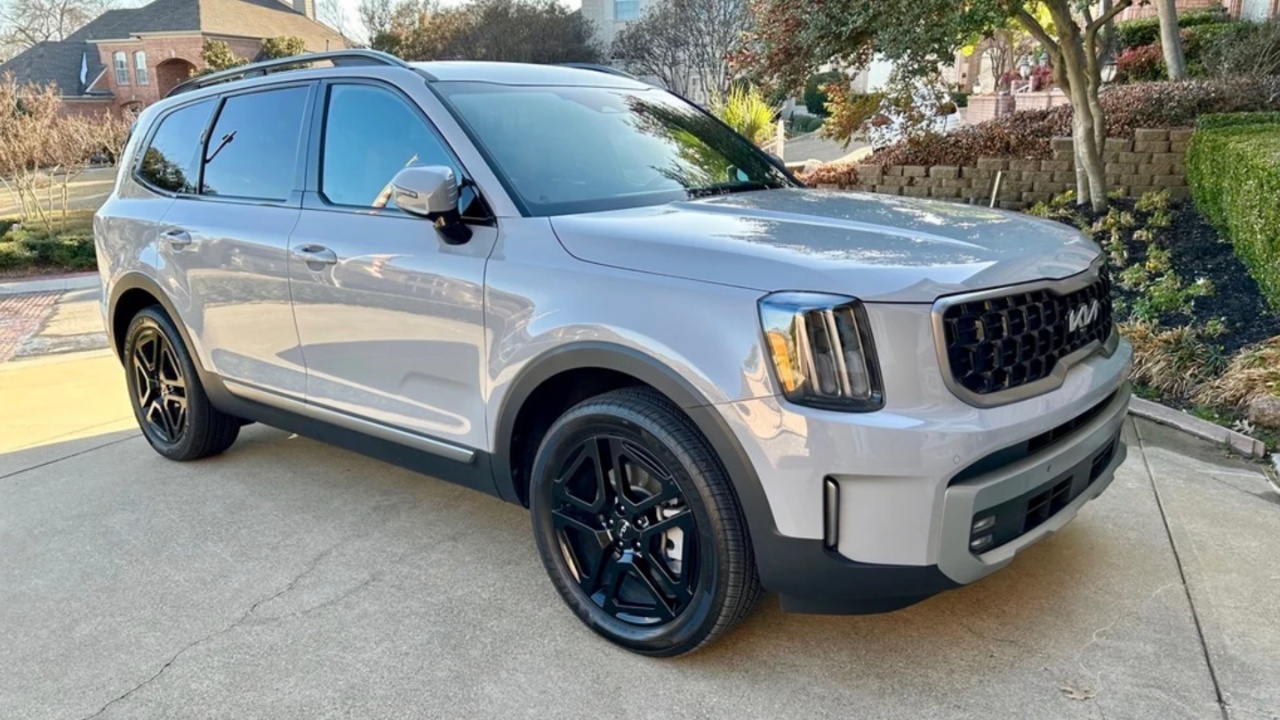
5. Kia Telluride
In the world of three-row SUVs, few vehicles balance luxury and utility as well as the Kia Telluride. While many large SUVs boast cargo space on paper, the Telluride stands out for the actual usability of its rear seat configurations, especially the ability of its second and third rows to fold down completely flat.
In just seconds, you can transform the vehicle’s rear half into a cavernous, level load area capable of swallowing everything from sheets of plywood to camping setups or moving boxes. With both rows folded, the cargo space becomes a true flat deck—no ridges, no gaps, no tilts—which is a rare achievement for a vehicle with three rows of seating.
This is more than just a convenience feature; it’s a core part of what makes the Telluride such a brilliant road trip and family vehicle. The third row, while perfectly suitable for passengers, folds effortlessly into the floor via a pull strap or button.
The second-row seats fold forward and down flush with the rear floor, and the resulting space is long enough to accommodate sleeping bags, outdoor equipment, or even impromptu in-car sleeping arrangements for adventurous travelers. The transition between seatback and floor is almost imperceptible, which means there’s no need to prop items up awkwardly or strap down wobbling cargo. It’s flat, it’s functional, and it’s extremely well-executed.
The Telluride’s excellence in this area also reflects its broader philosophy: giving buyers a vehicle that feels premium without making them pay luxury-brand prices. That flat-folding cargo space feels like something you’d find in a vehicle costing twice as much, yet Kia includes it as standard fare.
Families who regularly juggle passengers and gear, or anyone who needs serious cargo-carrying capability without moving to a full-size SUV or van, will appreciate the Telluride’s flexibility. It’s the kind of well-engineered versatility that turns an already-great SUV into a true leader in its class.
5 Car Seats That Waste Cargo Space

1. Chevrolet Camaro
The Chevrolet Camaro is built for performance and style, but when it comes to cargo versatility, it’s one of the most impractical vehicles on the market, particularly due to its utterly non-functional rear seats. Technically, the rear seatbacks do fold down, but calling it a flat load floor is generous at best.
The incline of the folded seatbacks is steep, and they don’t align with the trunk floor at all. The result is a tiered surface that disrupts any attempt to slide long or bulky objects through from the trunk. Combined with the Camaro’s tiny trunk opening and high load lip, the poor folding design renders any extra storage space almost entirely useless in real-world applications.
The situation is made worse by the structure of the interior. The rear seats are wedged between thick wheel wells and sloped rooflines, meaning even small items can be difficult to place flat without teetering on uneven ground. The seatbacks often stop folding before they’re truly horizontal, leaving an angle that not only wastes vertical space but also complicates cargo placement.
For example, if you’re trying to transport a box or suitcase that’s longer than the trunk itself, it’s likely to rest awkwardly on the incline, slide back during braking, or not fit at all. The theoretical cargo expansion that comes from “folding the rear seats” is mostly negated by poor execution.
Chevy’s decision here reflects a prioritization of performance over practicality, which may be fair given the Camaro’s mission, but it does leave the car lagging far behind rivals like the Mustang or Challenger, which offer more usable trunk space and flatter folding seats.
In the real world, many Camaro owners are forced to rely on passenger seat space or travel light simply because the car’s cargo area refuses to cooperate. In a vehicle that’s already limited on space, it’s frustrating to see a rear seat design that wastes the potential for real-world practicality by failing to fold down flat or level.

2. Mazda CX-30
Mazda has built a strong reputation for crafting cars that are fun to drive and stylishly premium, but when it comes to cargo space, particularly in the CX-30, form seems to have trumped function. While the CX-30’s rear seats technically fold down in a 60/40 split, they do not lie anywhere near flat, creating a significant slope that severely limits the practicality of the expanded cargo area.
This isn’t just a minor incline—it’s a steep, awkward pitch that makes stacking or sliding in large objects a frustrating affair. For a vehicle marketed as a crossover meant to handle city life and weekend adventures, this seat design feels like a missed opportunity.
One of the culprits here is the seat base height and cushion thickness. When folded, the seatbacks rest on top of the base rather than collapsing into a recessed space. That creates a wedge-like incline from the trunk forward, robbing you of vertical cargo room and making it impossible to lay flat items across the surface.
This issue is compounded by the CX-30’s relatively narrow trunk opening and sloping roofline, which already limit the ease of loading. With the seats folded but not flat, the usable cargo volume becomes more theoretical than practical, especially for larger or bulkier items like coolers, furniture, or bikes.
This is a classic case of a car that was designed more with aesthetics in mind than cargo functionality. While the interior quality, ride dynamics, and tech offerings in the CX-30 are commendable, the cargo area lets the experience down. It’s not just about numbers—it’s about real usability.
Mazda’s more utilitarian siblings, like the CX-5, offer a much more functional folding design. But the CX-30, caught between being a sporty hatch and a compact SUV, fails to satisfy on either front when it comes to maximizing interior flexibility.
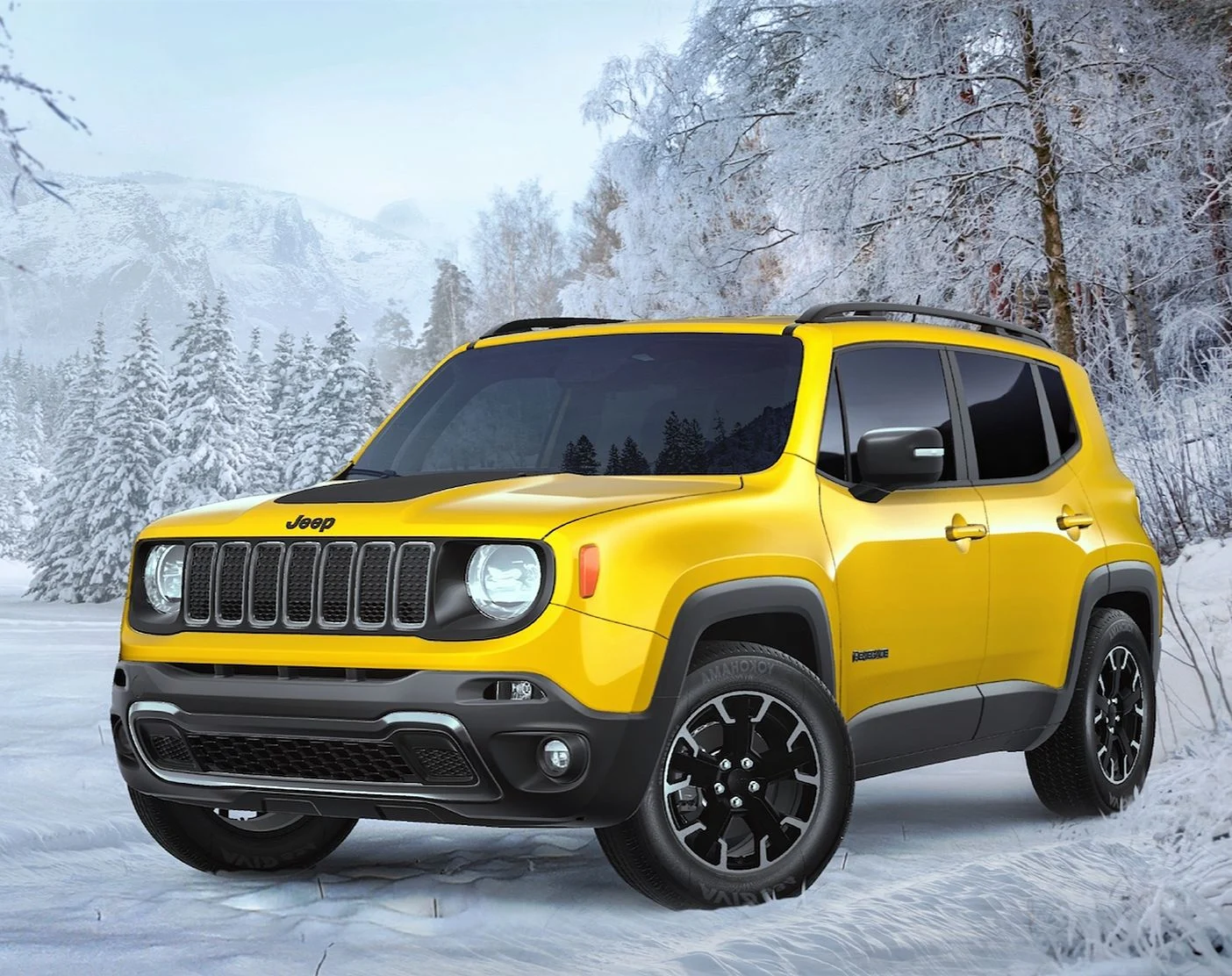
3. Jeep Renegade
The Jeep Renegade tries to walk the line between rugged utility and urban convenience, but one area where it falls notably short is in the design of its rear seats. Despite its boxy shape and seemingly cargo-friendly form, the Renegade’s rear seatbacks do not fold flat with the floor.
Instead, they leave an awkward step or incline, depending on the model and trim level. This discrepancy breaks the continuity of the cargo floor and creates uneven surfaces that can make loading even basic items a hassle. For a vehicle that markets itself on adventure and practicality, this seems like a fundamental oversight.
One reason for the uneven load floor is the elevated seat base. Rather than allowing the cushions to drop down into the floor pan or out of the way, the backrests fold forward and simply rest on top of the base, resulting in a “bump” in the floor right at the midpoint.
If you’re trying to load something like a large suitcase, a box of tools, or a dog crate, this step disrupts the load surface and can even cause items to tip or slide. It’s particularly frustrating when trying to maximize vertical space or lay down longer items that should easily fit in a car of this size.
The disappointment is magnified by the fact that the Renegade has so much potential. Its upright shape, tall ceiling, and wide cargo opening scream utility. But when the folding seat mechanism gets in the way, that potential is squandered.
Jeep could have made a few key changes, such as deeper footwells or a flip-forward cushion system, to allow for a flat-folding setup, but instead opted for a more basic design. The result is a rear seat system that limits the Renegade’s practicality and makes it fall behind even smaller vehicles in terms of useful cargo space.
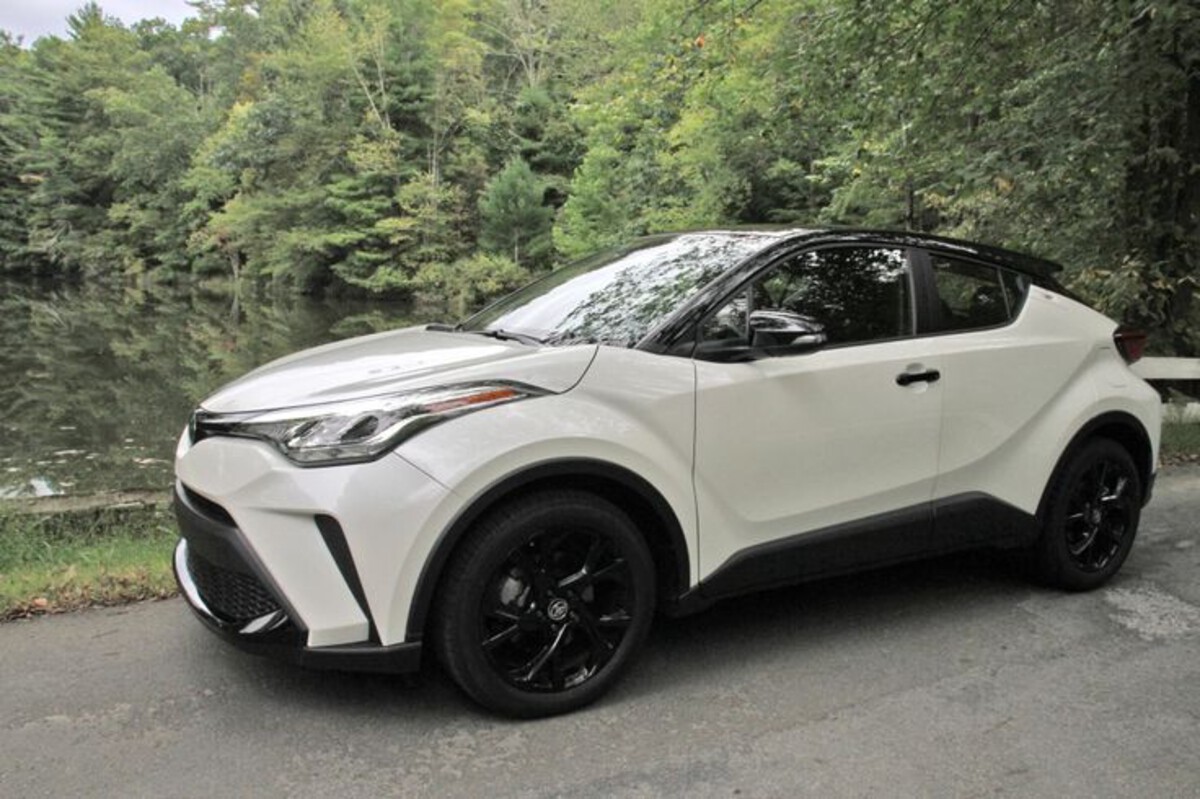
4. Toyota C-HR
The Toyota C-HR presents itself as a stylish, urban-friendly crossover, but its sharp lines and aggressive design cues come at the cost of real-world usability, particularly in the rear cargo area. One of the biggest frustrations with the C-HR is the way its rear seats fold.
While they technically fold forward in a 60/40 split, the seatbacks rest at a steep incline and do not create a flat load floor. In fact, the folded seats sit higher than the base of the trunk, forming a noticeable step that interrupts any hope of achieving a level cargo surface. For anyone expecting SUV-like flexibility, this can come as a rude surprise.
This becomes especially problematic when trying to load longer items, like a guitar case, skis, or even a couple of stacked suitcases. Instead of sliding smoothly into place, items tend to catch on the ledge created by the angled seatbacks. This isn’t just annoying—it’s a fundamental flaw in the cargo design that reduces the usefulness of the C-HR’s already limited trunk space. Toyota, known for its practical and thoughtful interior layouts in other models like the RAV4 and Highlander, seems to have sacrificed function for form here. The C-HR’s sloping roofline and rear-seat incline combine to shrink the usable space in a way that simply doesn’t match the vehicle’s real-world needs.
Worse still, the process of folding the seats is clumsy and not particularly intuitive. The headrests often need to be manually removed or adjusted, and the seats don’t always fold flat without an awkward shove.
This lack of refinement in the folding mechanism is surprising in a Toyota-branded vehicle, and it detracts significantly from the experience of owning what should be a small yet versatile crossover. For urban buyers or young drivers who prioritize utility as much as curb appeal, the C-HR falls short of delivering a well-rounded interior space.

5. BMW X4
Luxury doesn’t always equal practicality, and the BMW X4 is a prime example of a vehicle where sleek aesthetics override everyday utility. Designed as a coupe-style SUV, the X4’s fastback roofline and aggressive styling create a dynamic appearance, but they also interfere with interior functionality.
One of the biggest flaws is its rear seat folding design. While the seats do fold down in a 40/20/40 configuration, they do not lie completely flat, and worse, they rest at an incline that makes the expanded cargo area uneven and impractical for loading anything larger than soft bags or flexible items.
This is particularly frustrating in a luxury vehicle with a premium price tag. You expect refinement in every area—not just ride quality or materials, but also cargo usability. The X4, however, falls into the trap of form over function. The raised floor and shallow incline of the folded seats create a wedge-shaped space that limits usable height and stability.
Flat items like boxes or artwork can’t lie level, and large cargo items tend to slide awkwardly or lean against the rear seats. For drivers who travel, move gear frequently, or use their SUV for outdoor equipment, this design proves inefficient.
BMW markets the X4 as a “Sport Activity Coupe,” and unfortunately, that marketing seems to have prioritized visual drama over the practical traits that make an SUV truly versatile. The sloped rear glass also restricts vertical cargo height, further diminishing what should be a spacious storage area.
Owners who expect the X4 to perform as both a luxury vehicle and a capable cargo hauler will quickly find themselves frustrated by its limitations. While the car delivers on performance and cabin refinement, the rear seats’ inability to fold flat is a missed opportunity—and one that makes the X4 less of a dual-purpose vehicle and more of a style-first compromise.
Also Read: 5 Cars That Feel Planted At 80 MPH And 5 That Float Or Wobble
In a world filled with spec sheets and marketing buzzwords, it’s easy to overlook something as seemingly simple as how a car’s seats fold. But for drivers who live active lives, who value practicality as much as performance or style, the ability of rear seats to fold completely flat is more than a minor feature—it’s a gateway to how flexible, useful, and stress-free a car can be in day-to-day life.
Whether you’re transporting furniture, packing for a road trip, moving house, or even turning your car into an impromptu sleeping space, the design of those rear seats plays a crucial role in how well your vehicle adapts to your needs.
What separates the truly great examples—like the Honda CR-V, Subaru Outback, or Kia Telluride—from the frustrating ones like the Toyota C-HR or BMW X4 isn’t just about numbers or clever advertising. It’s about thoughtful engineering. The best folding-seat systems are designed with the user in mind.
They’re easy to operate, don’t require removing headrests or adjusting multiple components, and they result in a truly flat and level cargo area that feels like an intentional design feature rather than an afterthought. These vehicles understand that versatility is more than just cargo volume—it’s about usable space, and how effortlessly a vehicle transitions between carrying passengers and carrying gear.
On the other hand, cars that get this wrong often force compromises on their owners. Whether it’s the awkward step left by the Jeep Renegade’s uneven seatbacks or the steep incline in the Mazda CX-30’s folded seats, these poor designs waste space that could otherwise be optimized.
They introduce frustration into everyday activities like grocery shopping or weekend getaways. In some cases, like the Camaro or BMW X4, the issue is compounded by poor access through the trunk or fastback rooflines that limit vertical height, turning the cargo area into more of a formality than a usable space. These flaws aren’t just inconvenient—they’re reminders that good design is about more than aesthetics.
It’s also worth noting that folding-seat functionality isn’t exclusive to utility vehicles. Even compact cars and sporty hatchbacks can benefit from thoughtful rear seat engineering. A flat-folding seat setup adds incredible value to any vehicle category by allowing owners to do more with less—more flexibility, more storage options, and more satisfaction in ownership.
It’s the kind of feature you may not think about during a test drive, but one you’ll deeply appreciate the first time you need to load something large or awkward. And once you’ve experienced the difference a flat cargo floor can make, you’ll notice every angle, bump, and design compromise in the ones that don’t get it right.
As automakers continue to push for style, efficiency, and digital convenience, they must also remember the importance of mechanical practicality—the things you touch and use every day. The ability to fold seats flat may not be flashy, but it’s one of those small details that define a car’s usefulness.
So next time you’re car shopping, don’t just look at horsepower or infotainment screens. Drop those rear seats. Check the floor. Imagine sliding in a mattress or a bike. Because when the seats fold truly flat, a car stops being just transportation, and starts becoming a real tool for your life.

